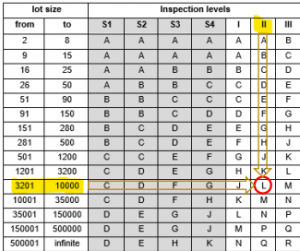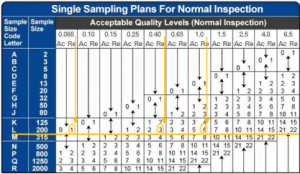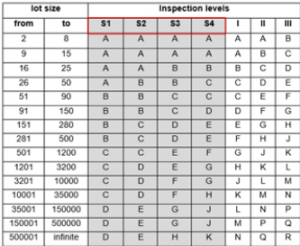Newsletter September 2022:
By: Robert Klinger
Ensuring quality when purchasing in remote production facilities
When sourcing outside Europe, many companies fear that a lack of quality can lead to incalculable costs or supply risks. With the right “tools”, this is not the case.
The following article will teach you how to ensure quality with manageable means, even in distant production facilities.
Let’s assume that the usual checks, such as the “pre-production check” in the form of an initial sample check and the “in-production check” in the form of an audit, have been positive. The first delivery of the new supplier is imminent and should be released for delivery, which can be done with a so-called “pre-shipping check”. But, of course, the complete delivery cannot be 100% checked for all features. So here, it is advisable to carry out a random check. However, those who deal with the topic of random checks will find that there are a few unanswered questions:
- How many components should be tested?
- Which components should be tested?
- What should be tested on the components?
- When will the delivery be accepted or rejected?
- How is the test documented?
- Who conducts the check?
A very effective and proven method is a random sample test according to ISO2859 Acceptable Quality Level – in short, an AQL test.
Before concluding the contract, it is important to agree with the supplier on the framework conditions regarding the AQL check, which can be arranged, e.g., in a quality assurance agreement (QSV). It should be noted that:
- Access to the delivery, also by third parties, e.g., service providers, is agreed (due to COVID-19 or if this is generally necessary…)
- The quality level is flexibly agreed upon
- Error classes must be defined
- For the AQL report, pictures or videos can be made
- It is possible that “component-destroying” tests are to be made
The following example shows how to work with an AQL table.

The result of the “lot size” and the agreed “Inspection Level” is the code letter “L”.
The following table shows the number of parts to be tested and the number of rejects of the individual defect classes.

In our case, the sample size is 200 parts. The rejection numbers are “1” for critical defects, “3” for major defects, and “6” for minor defects. The delivery will be rejected when these figures are reached. It is, therefore, important to agree with the supplier in advance on what exactly critical errors, main errors, and secondary errors are. It makes sense to define this using an error catalog. In this way, e.g., newly occurring fault patterns can also be classified correctly.
For destructive or more expensive tests, other “test levels” can also be selected (S1-S4), which significantly reduces the number of tests.

If you do not have your own staff on-site at the supplier, it is possible to have an AQL check carried out by external service providers. However, please, remember that the service provider must have all the information in detail. Thus, you as the client are in the “obligation to deliver”. A service provider will only check what has been commissioned to him. Therefore, you should give a service provider all relevant documents, such as the packaging or test instructions. Furthermore, you should coordinate the report form with him. The report should include images of the tested components. Discovered errors should appear in detail in the report. Another possibility of a report is a “video inspection”. You can avoid having to make a report with 200 images with high test numbers.
As you can see, an AQL test is a very variable and yet manageable tool to carry out an efficient random check. By means of a “dynamically” agreed inspection level, e.g., a higher inspection quantity can also be specified for the first deliveries. If the process is retracted and runs stably, the test quantity can be reduced accordingly.
Please feel free to contact us at any time. We will be happy to support you (info@bdp-mc.com).



